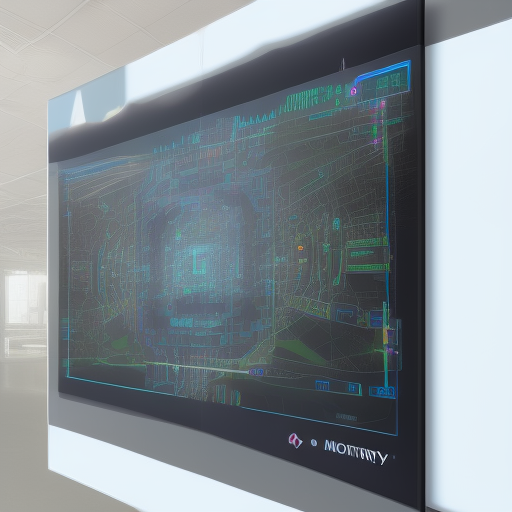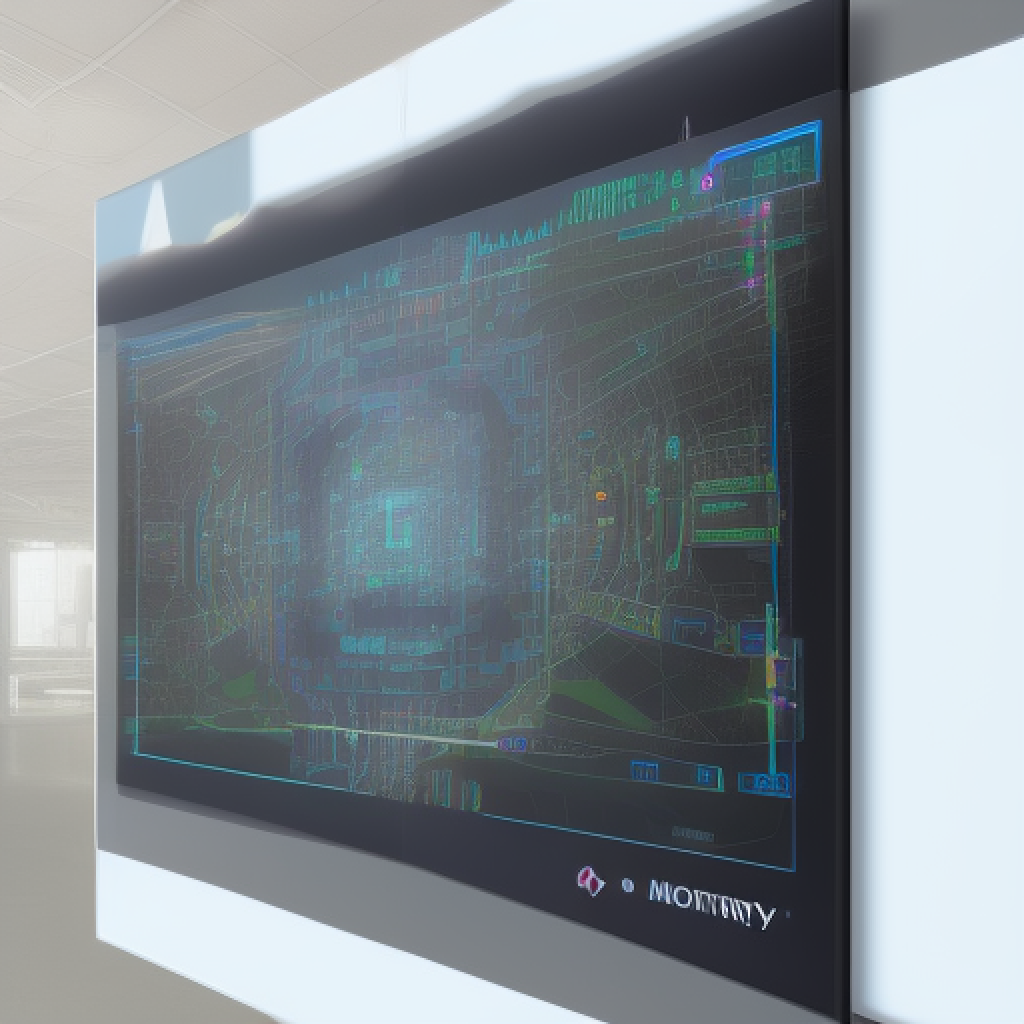Interactive touch panels in the construction of smart cities

Interactive touch panels have become an essential component in the construction of smart cities. They provide a user-friendly interface for citizens to access important information and services. Here are some ways interactive touch panels are used in smart cities:


Public Information Kiosks serve as an important tool for empowering citizens to access valuable information about the city’s services, events, and attractions. These kiosks are often located in public places like parks, public squares, and commercial centers, designed to provide on-the-go information to visitors and residents alike. The use of touch panels in these kiosks has made information access easier and more convenient. With a few taps on the screen, visitors can access city maps, directions, public transportation schedules, weather updates, and other essential information. The touch panels also allow for customization, enabling citizens to select and view specific information that is relevant to their needs. Public Information Kiosks are a cost-effective solution for providing essential information to citizens. As opposed to hiring staff or creating printed materials, these kiosks require minimal maintenance and can be updated remotely. They also provide a more eco-friendly solution by reducing paper waste and reducing the amount of energy consumed by electronic devices. In addition to providing essential information, these kiosks offer a platform for promoting local tourism and events. Visitors can access information about local attractions, festivals, concerts, and other events taking place in the city. This, in turn, encourages economic growth by stimulating local businesses and generating revenue. Public Information Kiosks are also helping to bridge the digital divide by providing access to information to those who may not have access to the internet at home. By providing information on a public platform, citizens who may not have internet access can still access essential information about their city. Overall, Public Information Kiosks are a valuable resource for cities and communities. They provide essential information to citizens and visitors, promote local tourism and events, and help bridge the digital divide. As technology continues to advance, we can expect to see more innovative solutions like these kiosks that improve the quality of life for citizens and enhance the visitor experience.
Interactive touch panels have become an integral part of the modern transportation industry in recent years. With the increasing demand for quicker and more efficient travel options, transportation hubs such as airports, train stations, and bus terminals have adopted the use of interactive touch panel technology to provide passengers with real-time information about their travel schedules, delays, and other important information. One of the major benefits of interactive touch panels in transportation hubs is that they allow passengers to access information easily and quickly. With just a few taps on the screen, passengers can find out the arrival and departure times of their flights, trains or buses, as well as any delays or cancellations that may affect their travel plans. This real-time information is invaluable to travelers, especially those who are in a hurry or have connecting flights to catch. Another key advantage of interactive touch panels is that they can be used to provide travelers with additional information about their destination. For instance, many touch panels provide maps and other useful resources that help passengers navigate their way around the airport, train station or bus terminal. This is particularly useful for people who are unfamiliar with the transportation hub or are visiting a new city or country for the first time. Interactive touch panels can also be used to enhance the overall travel experience for passengers. Many transportation hubs have installed touch screen kiosks that allow passengers to book their flights, trains or buses, select their seats, and even order food and drinks. This not only saves valuable time but also provides a convenient and hassle-free experience for travelers. Moreover, interactive touch panels in transportation hubs can also be used to promote various services and products such as duty-free shops, restaurants, and taxi services. With targeted advertisements, passengers can learn about different offerings available to them and make informed decisions about their purchases. In conclusion, interactive touch panels have become an essential tool for the transportation industry, providing real-time information, enhancing the passenger experience, and promoting various services and products. As technology continues to advance, we can expect to see even more innovative uses of interactive touch panels in the future, making travel a more seamless and enjoyable experience for all.
Interactive touch panels have become an important addition to smart cities when it comes to enhancing public safety. Not only do they provide an engaging and interactive experience for citizens, but they also serve as a tool for authorities to get important messages across to the public. With the increasing frequency of natural disasters and other weather emergencies, interactive touch panels have become a vital communication tool for authorities to ensure the safety of citizens. One of the most significant advantages of using interactive touch panels is their ability to deliver real-time information about potential hazards, such as natural disasters, weather emergencies, or any other event that can pose a threat to public safety. The panels are strategically installed in public spaces such as parks, airports, bus stations, and other busy areas where people congregate. Once installed, they can be programmed to communicate important information to citizens about potential hazards and how to stay safe. This function is particularly useful to cities that are prone to natural disasters, such as hurricanes or earthquakes, where time is of the essence. Another advantage of interactive touch panels is their versatility. They can be customized to accommodate different types of information and disseminate it in various formats such as images, videos, and audio. This feature allows authorities to create engaging and interactive content that captures the attention of the public and delivers important messages effectively. For example, during a hurricane, a touch panel could show a video of how to prepare for the hurricane, which could include information like how to board up windows, gather supplies, and evacuate. In addition to natural disasters, interactive touch panels also serve as an effective tool during other types of emergencies such as terrorist attacks or mass shootings. They can be programmed to show emergency evacuation routes and instructions on how to stay safe during an attack. The panels can also be equipped with an emergency button that citizens can press to alert authorities in case of an emergency. In conclusion, interactive touch panels have become a critical tool in ensuring public safety in smart cities. They are versatile, engaging, and customizable, making them the perfect tool for delivering important messages to citizens effectively. As we continue to experience an increase in natural disasters and other potential hazards, interactive touch panels will continue to play a vital role in keeping citizens informed and safe.
Digital signage has revolutionized the way advertisements and information are displayed in public spaces. The use of interactive touch panels in smart cities ensures that the information displayed is not only eye-catching but also user-friendly. These touch panels can be found in shopping malls, transportation hubs, and other public spaces. One of the most significant advantages of digital signage is that it allows for easy and quick updates of content. This means that businesses and organizations can easily update their advertisements or messages to fit the current situation. For instance, during a crisis, they can quickly update the panel with important safety information or emergency alerts. This feature makes digital signage an essential tool in smart city management. Another significant advantage of digital signage is that it allows for targeted advertising. Advertisements can be tailored to specific demographics, ensuring that they reach the right audience. For example, a shopping mall can display advertisements for products or services that are popular among their target customers. This targeted advertising increases the chances of converting viewers into customers, which is valuable for businesses. Digital signage also makes it possible for businesses to gather data about their customers. By analyzing the data collected from touch panel interactions, businesses can understand their customers better, which can help them improve their products or services. For example, a business can track which advertisements get the most clicks, which can help them understand what their customers are interested in. In conclusion, the use of interactive touch panels for digital signage in smart cities has transformed the way businesses and organizations display their advertisements and information. It has made it easier to update content, target advertising to specific demographics, and gather data about customers. As smart cities continue to grow, digital signage will become an even more crucial tool for successful city management.
Overall, interactive touch panels are an important tool in the construction of smart cities. They help to improve citizen engagement, enhance public safety, and provide a user-friendly interface for accessing important information and services.







